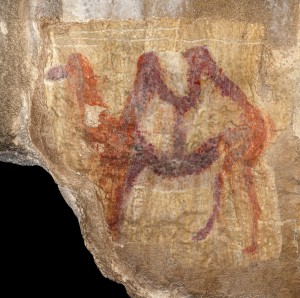 Ekaterina G. Devlet1*, Alexander S. Pakhunov1**, Alexander K. Agadjanian2***
Ekaterina G. Devlet1*, Alexander S. Pakhunov1**, Alexander K. Agadjanian2***
1-Institute of Archaeology RAS, Moscow, Russia; Laboratory for Multidisciplinary Research of Prehistoric Art in Eurasia (Novosibirsk State University – University of Bordeaux), Novosibirsk, Russia
2-Borissiak Paleontological Institute RAS, Moscow, Russia
E-mail: * eketek@yandex.ru; ** science@pakhunov.com;*** aagadj@paleo.ru
Keywords: Kapova cave, Upper Paleolithic, cave art, camel, restoration, imaging, pigment analysis.
Kapova Cave (Shulgan-Tash) is located in the Southern Urals in Burzyan District of the Republic of Bashkortostan on the territory of the State Nature Reserve Shulgan-Tash. The first Upper Paleolithic paintings were discovered in 1959; according to different estimates, the number of such paintings in the cave varies from 50 to almost 200. This significant variation is due to the numerous red spots, partially covered with calcite deposits, which make it difficult to make out reliably the intentional drawings with visual assessment only. Some deposits are so thick that they reach, for example, 10 cm on the panel with horses and signs in the “Chamber of Chaos”, and the presence and nature of the images under can only be assumed. Currently, the cave is under restoration promoted through the program of the Government of the Republic of Bashkortostan. This entailed the removal of modern graffiti from several planes and revealing of a Bactrian camel, which is unique for Upper Paleolithic art, from under the calcite.
DOI: 10.7868/S0869606318020034







